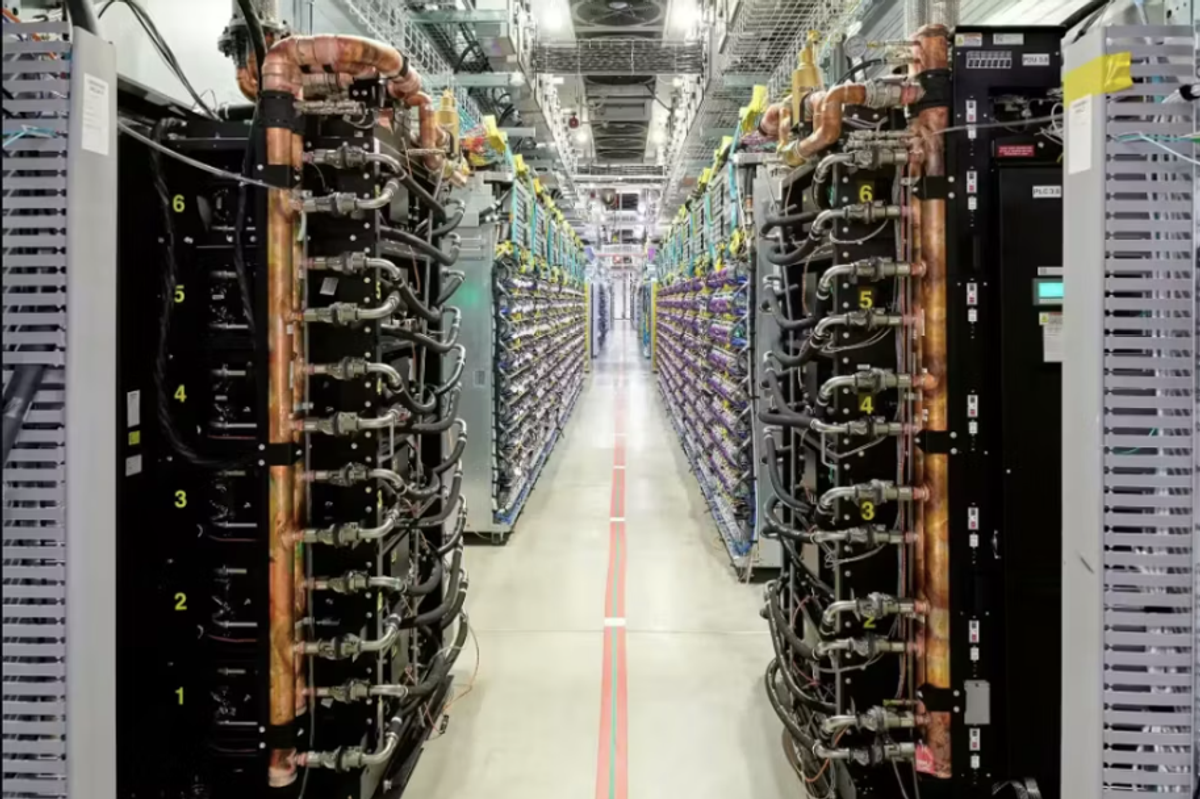University of Houston's energy transition exec unpacks future of institute, partnerships, and more
Q&A
Joseph Powell is about six months into his role as the founding director of the University of Houston’s Shell-backed Energy Transition Institute but already is eyeing how the Institute can aid generations to come through clean energy.
The Energy Transition Institute, which launched a year ago through a $10 million grant from Shell USA Inc. and Shell Global Solutions (US) Inc., is focused on three core areas of clean energy: hydrogen, carbon management, and circular plastics. Powell previously served as chief scientist for Shell as a chemical engineer and has co-invented 60 granted patents.
Powell discussed with EnergyCapital the projects ETI is excited for, opportunities for students to get involved, and their partnership with corporations.
EnergyCapitalHTX: To get started with a little bit of background, the University of Houston Energy Transition Institute was established in March 2020 with a $10 million commitment from Shell. So why did the university decide now is the time for an institute like this to be formed?
Joseph Powell: Houston is the energy capital, and the energy transition has been on everyone's mind, and so certainly now is the right time for an offering to industry to look at how to coordinate activities in that space. We reached out to Shell, which has really made strong commitments in terms of making the pivot from being an oil and gas company to being an energy company and really embracing the energy transition and everything that goes along with that. There was a strong relationship between University of Houston and Shell on the recruitment side, so a number of the Shell staff and employees. UH has been one of the principal suppliers of talent to Shell as an organization, also on the research side in terms of research around hydrogen chemical reaction engineering, and other aspects on the social and community benefits side of what happens with energy. So, there's been quite a bit of overlap. I think Shell saw it as really important to be partnering in the energy capital of the world, to be providing that pipeline of talent for what's going to be needed for the energy transition.
EC: You decided to come to UH to lead the Energy Transition Institute over retiring. What inspired you to take on this role? What’s your vision for the organization?
JP: It was an opportunity I couldn't pass up. I had worked 36 years in the industry, for Exxon and 32 years with Shell. The elements of the Energy Transition Institute were something that I was very passionate about working on with Shell, since I've been promoted to chief scientist of chemical engineering for the growth global group in 2006. I was involved in helping Shell set its strategy to become a full energy company and chemicals, not just oil and gas. I was involved in the elements of that transition, and then I also had a very strong interest in sustainability in terms of how to manage not only the greenhouse gas footprints of the company, but also elements on the chemical side that go with sustainability.
Shell wanted to combine those two into an energy transition Institute, circular plastics and chemicals were a major focus of that, along with hydrogen as a clean vector for future energy. I was involved with Shell and helped to put together some of their moonshots for how hydrogen can be used in the future economy. The Biden administration has now termed moonshots as Earthshots for the US to be able to use hydrogen as that clean vector to deliver renewable and other forms of energy going forward, as well as carbon management, so I was heavily involved Shell’s planning for how to deal with CO2, whether to capture it and put it underground, or capture it and use it. I'm on the National Academy study team right now, looking at what is the potential to be using some of that CO2 into products as opposed to storing it underground. All of those elements were important and in line with things that I care about and have been heavily involved with, throughout my career. So, why retire when one can be engaged with all of those types of things and now help the next generation come up to speed and take that over and drive it into 2050 and beyond what needs to be done?EC: How is UH engaging with corporate partners? Why is a collaboration of this nature important?
JP: This collaboration is important for several reasons. One is that we are that bridge to the students and workforce of the future. It's very important for this generation to be as excited about careers and energy as I was, coming up during the energy crisis of the last century and we thought we were absolutely out of energy. We had rationing of gasoline and other things going on, back when I was in high school. Now we have many sources of energy, in a certain sense an energy abundance, but we really need to be looking at the environmental footprint, impact on the climate and then what forms of energy we want to be using. Then you add to that the issue with the impact of plastics on the environment, and how to drive to a more circular economy where we're recycling those and having less of that escape into the environment; those are all strong drivers of what needs to be done going forward.
It takes a lot of energy to process chemicals, plastics, and materials in a circular manner. Developing that workforce of the future means we need the students who want to engage in these efforts and making sure that those opportunities are available across the board to people of all different economic backgrounds in terms of participating in what is going to be just a tremendous growth engine for the future in terms of jobs and opportunities. You're looking at trillions of dollars of annual investment that's needed to manage the energy transition, so it's a really exciting opportunity for those who want to be going into those careers. It's not just science and engineering, but also jobs in law, policy, and communications, because there's a tremendous need for knowledge and background in the energy transition in order to be effective in that going forward. We want to have all the good talent that can be attracted to that arena as a way to address the problem. It's a grand challenge.
We want to make sure that in addition to the research opportunities, since UH is a Tier 1 research institute, we focus on working very closely with industry; there's a number of multinational and local chemical and energy companies that have their research centers and home offices in the Houston area. We can develop those close relationships between the researchers and business interests involved with the students at the university, because we're right here and co-located and can really develop some very strong working teams in that space. It's been exciting to be responding to the federal grant opportunities, which have been abundant in the last year and a half and putting together proposals, to be engaging the industry investigators along with the university students to work on some of those problems. It's a good win-win for both.
We also get to be a trusted voice in the overall equation because there's a lot to know and understand about energy and circular chemicals. They’re more nuanced and complex than what may appear in the news headlines in terms of understanding the trade-offs that have to be worked out, in order to optimize for everyone who's involved. The university can bring in that broad set of stakeholders and have a conversation and make sure that all those co-benefits are understood and the issues that come with energy infrastructure are also worked through for people impacted by the infrastructure but also the benefits of clean air, cleaner environment, and reduced risk of climate change.
EC: Are there any particular technologies the institute is focusing on or excited about at the moment?
JP: I'm really big on hydrogen as an energy vector for the future. Currently, we use hydrogen primarily in refining petroleum into gasoline and diesel and also making fertilizer which is very important for mankind. There was a Nobel Prize on that, you know, more than 100 years ago, and the importance of being able to grow food at rates the planet’s population requires.
Hydrogen now is being looked at, beyond those applications as essentially the diesel or gasoline of the future and also the liquefied natural gas of the future. It can be a clean vector, because you can put it into a fuel cell and generate energy cleanly where water is the only product of that reaction. That can be used to drive quite a number of energy related processes that are currently using combustion of fossil fuels that contain carbon. One of the interesting things is that hydrogen can be supplied to trucks and buses, agricultural tractors, and such. Most of the goods that you're buying today are produced in warehouses where the forklifts are running on hydrogen fuel cells rather than batteries because they refuel so quickly. It's cleaner than emissions. So then there's good air quality in the warehouses. There are more than 60,000 hydrogen-fueled forklifts now in the US, because of that value proposition. We see that for this heavy duty transportation, hydrogen is that very clean vector, you can make it by taking renewable energy and splitting water into hydrogen so it can be very clean. It can also be made from the abundant natural gas we have in Texas and storing the CO2 underground and then using the clean hydrogen for that fuel. That's one of the very exciting new value propositions that go with the Institute.
The second one is carbon management. The Energy Transition Institute will sit within UH Energy, which was founded a number of years ago and so it's looking at the transition part of energy, but UH Energy has its Center for Carbon Management in Energy, which has been focusing capturing and storing CO2 underground off of the existing facilities that we have up and running. They're run by Chuck McConnell but what we will do with ETI is extend that more onto the research side for some of the new things coming along in terms of capturing and utilizing CO2. I'm on a national academy study looking at where and how we want to be turning that CO2 into usable products, using energy and hydrogen, to make a number of those projects. That synergizes with hydrogen as part of the Institute.
Capturing and converting CO2 into usable products is certainly one of the exciting opportunities and then also to reuse those products we've already been making. There are also so many nice things you can do with hydrogen in terms of energy storage, and also helping to upgrade some of the carbon dioxide into usable products, but then also bio feedstock, you can take crop residues or trees and other energy type materials and use hydrogen to upgrade those into those types of plastic materials as well. That's another place where hydrogen is combined with managing a carbon resource to make a more sustainable plastic or polymer.
EC: With UH’s strong emphasis on research and entrepreneurship, is the Institute playing to these strengths within its programming and opportunities to further this trend and if so how?
JP: The money that's been funded by Shell into the launch of the Institute, and then that's been leveraged up to the $52 million point through various donors matching funds. With that, we will be hiring additional faculty to work in this space so that we can further expand the research that's being done. Each new faculty member becomes the opportunity for three things: more coursework in the area around energy, which impacts the student education; the hiring of graduate students who will be doing research; and then that also translates into undergraduate opportunities to be working in the labs and learning. We're also going to be building a new innovation hub in the center of campus here. It will be right across from the MD Anderson library where the old College of Technology building had been located.
On the first floor, there will be a makerspace where the students with ideas and people from the community will be able to come in and have access to 3D printers and other types of materials to put their widgets and prototypes together. On the second floor, then will be the Wolff Center for Entrepreneurship, which has the top undergraduate program in terms of entrepreneurship so they will hold mentorships, present there, in classroom-like settings, getting people involved with launching an idea and taking it forth into the commercial marketplace. The Energy Transition Institute will be on the third floor because so much of that innovation will be involved in the space of energy transition, which is really the main growth engine for expanding research at the university. Then we'll have on the top floor some laboratories, not only on chemistry and materials, but also on data science. And so we have a Data Science Institute, set up by HPE here at UH, looking at for example how artificial intelligence, machine learning and all those kinds of things help you innovate in the energy materials and processes.
Having a hub that combines all of that together really is an attraction to get all those players together on campus and will be really a key to making all this happen. It's a really exciting place to get involved and if you're a student, having all that in front of you, in terms of opportunity, we think it'd be a great attraction.
------
This conversation has been edited for brevity and clarity.










